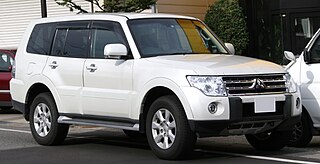| Mitsubishi Dingo | |
|---|---|
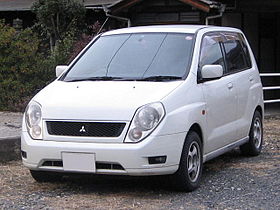 | |
| Overview | |
| Manufacturer | Mitsubishi Motors |
| Production | 1998–2003 |
| Body and chassis | |
| Body style | Minivan |
| Powertrain | |
| Engine | 4G13 1.3 L I4 4G15 1.5 L GDI I4 4G93 1.8 L GDI I4 (2000–03) |
| Transmission | INVECS-II 4-speed auto (1998–2000) 4-speed auto (2000–03) INVECS-III CVT (2000–03) |
| Dimensions | |
| Wheelbase | 2,440 mm (96.1 in) |
| Length | 3,885–3,920 mm (153.0–154.3 in) |
| Width | 1,695 mm (66.7 in) |
| Height | 1,620–1,635 mm (63.8–64.4 in) |
| Curb weight | 1,170–1,280 kg (2,579.4–2,821.9 lb) |
| Chronology | |
| Successor | Mitsubishi Colt |
The Mitsubishi Mirage Dingo is a mini MPV built by Mitsubishi Motors from 1998–2003, using a shortened version of the Mirage platform. The "Dingo" name is derived from Bingo and its connotations of good fortune, but with the B replaced by D to represent Mitsubishi's Diamond logo. [1] In Japan, it was sold at a specific retail chain called Car Plaza . Exterior and Interior is highly similar to Mitsubishi Dion which is an SUV sold in Japan

Mini MPV— an abbreviation for Mini Multi-Purpose Vehicle— is a vehicle size class for the smallest size of minivans (MPVs). The Mini MPV size class sits below the compact MPV size class and the vehicles are often built on the platforms of B-segment hatchback models.
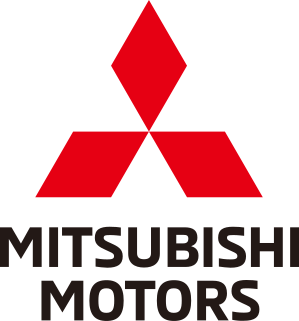
Mitsubishi Motors Corporation is a Japanese multinational automotive manufacturer headquartered in Minato, Tokyo, Japan. In 2011, Mitsubishi Motors was the sixth-biggest Japanese automaker and the nineteenth-biggest worldwide by production. From October 2016 onwards, Mitsubishi has been one-third (34%) owned by Nissan, and thus a part of the Renault–Nissan–Mitsubishi Alliance.
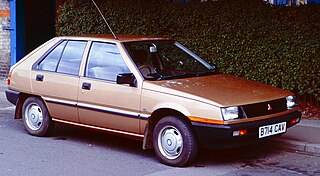
The Mitsubishi Mirage is a range of cars produced by the Japanese manufacturer Mitsubishi from 1978 to 2003 and again since 2012. The hatchback models produced between 1978 and 2003 were classified as subcompact cars, while the sedan and station wagon models, marketed prominently as the Mitsubishi Lancer, were the compact offerings. The liftback introduced in 1988 complemented the sedan as an additional compact offering, and the coupé of 1991 fitted in with the subcompact range. The current Mirage model is a subcompact hatchback and sedan and it replaces the Mitsubishi Colt sold between 2002 and 2012.
As with most direct competitors in the market segment, accommodation is limited to two rows and five seats. The rear bench is split 50-50, with each section able to be slid forwards or backwards individually. Alternatively, folding or detaching the rear chairs provides a large and flat storage area. The rear seats can also be flipped downward to form a pair of beds. Because the gearshift is column-mounted there is no transmission tunnel, thus enabling oocupants to walk between front and rear seats.

Initially available with the 4G15 "Orion" 1.5 L GDI powerplant mated to an INVECS-II 4-speed auto, a smaller 1.3 L version (without GDI) and a larger 4G93 1.8 L version were introduced with a facelift in 2000, as well as Mitsubishi's INVECS-III continuously variable transmission.
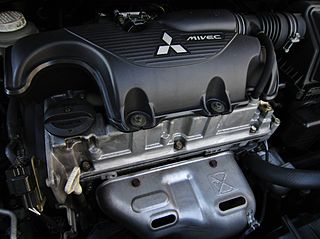
The Mitsubishi Orion or 4G1 engine is a series of inline-four internal combustion engines introduced by Mitsubishi Motors in the 1970s, along with the Astron, Sirius, and Saturn. It was first introduced in the Colt and Colt-derived models in 1978. Displacement ranges from 1.2 to 1.6 L.

Gasoline direct injection (GDI), is a form of fuel injection employed in modern two-stroke and four-stroke gasoline engines. The gasoline is highly pressurized, and injected via a common rail fuel line directly into the combustion chamber of each cylinder, as opposed to conventional multipoint fuel injection that injects fuel into the intake tract or cylinder port. Directly injecting fuel into the combustion chamber requires high-pressure injection, whereas low pressure is used injecting into the intake tract or cylinder port.
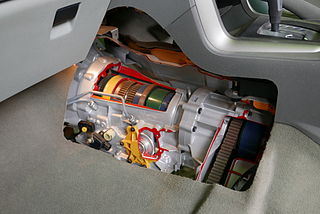
An automatic transmission, also called auto, self-shifting transmission, n-speed automatic, or AT, is a type of motor vehicle transmission that can automatically change gear ratios as the vehicle moves, freeing the driver from having to shift gears manually. Like other transmission systems on vehicles, it allows an internal combustion engine, best suited to run at a relatively high rotational speed, to provide a range of speed and torque outputs necessary for vehicular travel. The number of forward gear ratios is often expressed for manual transmissions as well.
In China, the Dingo is license-built and marketed as the Hafei Saima since April 2001. [2]











